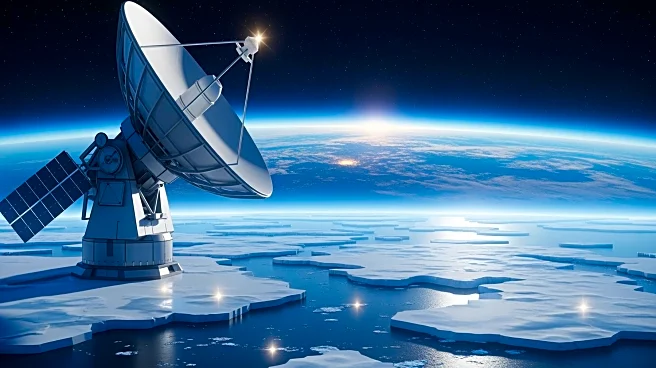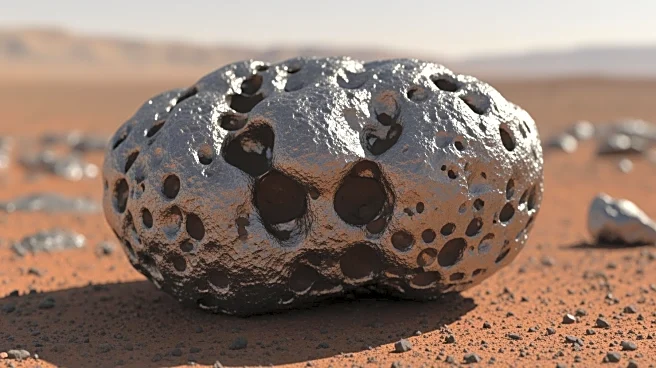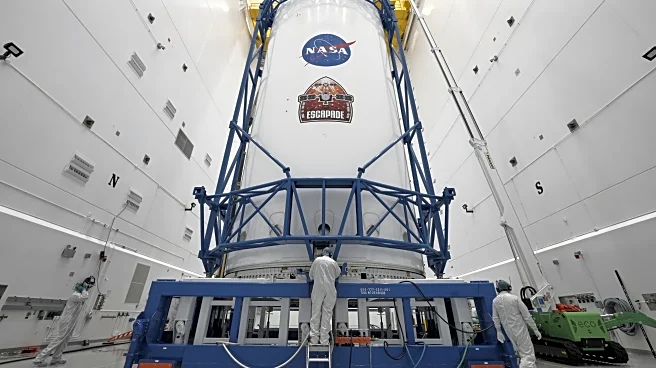What's Happening?
NASA has unveiled the potential of its Surface Water Ocean Topography (SWOT) platform for improved monitoring of Arctic sea ice. The SWOT platform, equipped with a Ka-band interferometric altimeter, offers
the capability to capture two-dimensional estimates of sea ice thickness, addressing gaps left by previous monitoring systems like ICESat-2. This advancement is crucial as Arctic sea ice continues to decrease in extent and thickness, impacting global climate patterns.
Why It's Important?
Accurate monitoring of sea ice is vital for understanding climate change dynamics and predicting future environmental shifts. The SWOT platform's ability to provide detailed data on sea ice thickness can enhance climate models and inform policy decisions related to climate mitigation and adaptation strategies. As the Arctic plays a key role in regulating global temperatures, improved monitoring can aid in assessing the impacts of melting ice on sea level rise and ecosystem changes.
What's Next?
Researchers will continue to explore the capabilities of SWOT, integrating its data into climate models and expanding its use for other environmental monitoring applications. The insights gained from SWOT could lead to more informed climate policies and international cooperation on Arctic conservation efforts.
Beyond the Headlines
The development of advanced monitoring technologies like SWOT highlights the importance of scientific innovation in addressing climate challenges. It also underscores the need for continued investment in research and development to enhance our understanding of complex environmental systems.












